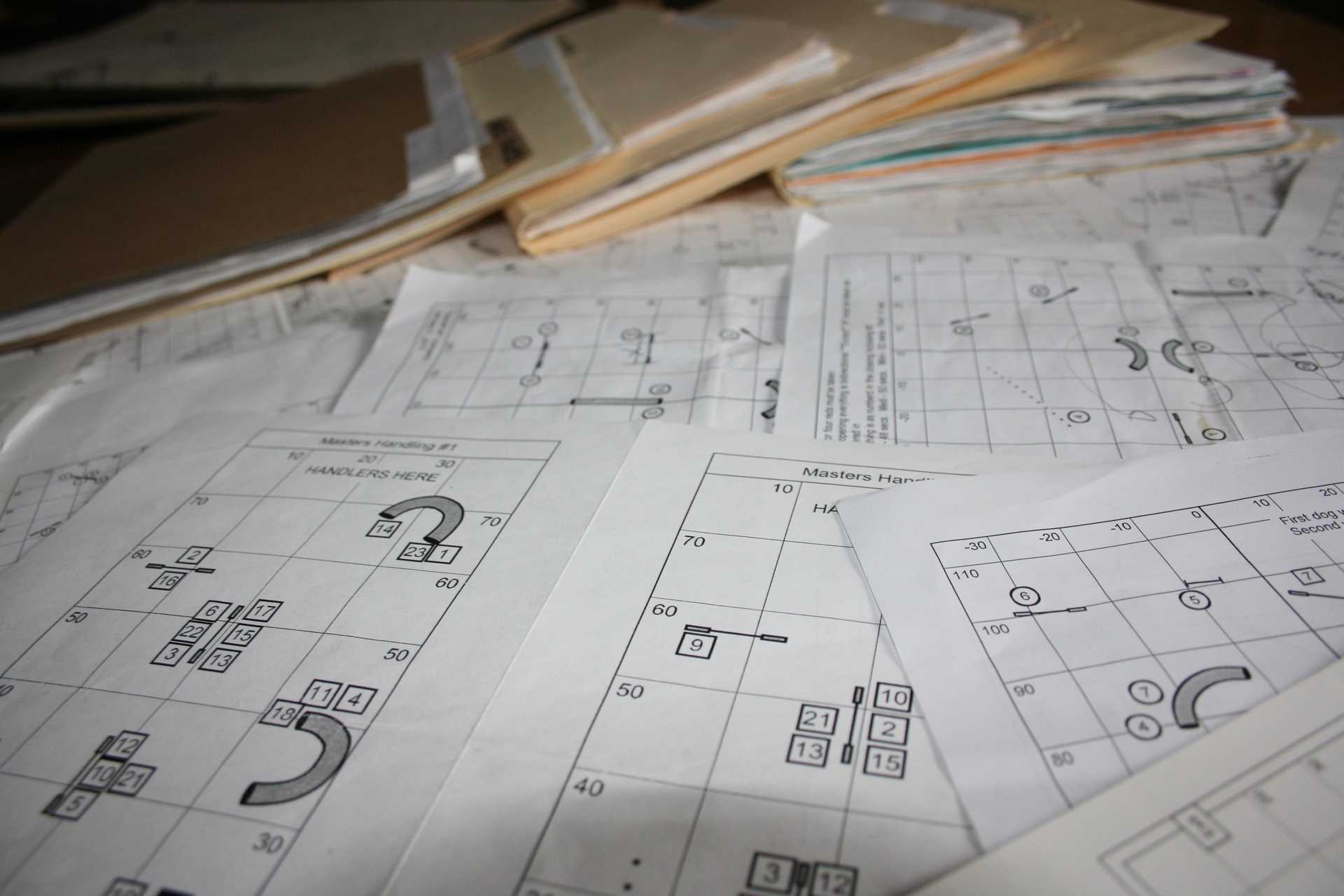Oops I Did It Again... and Almost Felt Bad
30 Apr 2014
I guess I was subconsciously inspired by a challenging international practice course I liked when I came up with these courses for my Advanced and Masters students last night. The Masters group ran the white circles and the black circles are the changes for my Advanced group who ran obstacles 1-18.
If you only have a small space consider setting up 1-6, or 1-10. You can also setup 11-18 (substitute a spread or 6 weave poles for the teeter) or 11-20, depending on your space.
All obstacles locations are from memory and are only approximate - use your judgment and always set up your course with safety in mind:
Here are some handling challenges/suggestions for the Masters sequence:
- Wrap dog either way on 1 so long as handler can be in position for 3.
- Many handling options on the Back Side Handling the Quad Back Side - Patrick Bucher Course/VideoThe Connection Between Threadles and Back SidesBack Side/Back Side JumpBack Side of Jump Handling Combinations - Video at 3 (there was a post at the left wing of the jump in this building so turning the dog to the right at 4 was a better solution in that space):
- Wrap dog around right post ending with dog on left (Curly-Q).
- Rear Cross Learning the Rear CrossRear Cross Jump Wrap where dog wraps far/left standard gives the dog a more straight on approach to 4.
- Take dog to take off side of jump for a Forced Front Cross to Ketschker (putting dog on handler's left) or to Jump Wrap (putting dog on handler's right).
- Push dog to back side, while handler stays on take off side and "serps" the jump and then either Blind Crosses to put dog on handler's left (aka "German Turn") or keeps dog on handler's right.
- Wrap dog right or left at 4 (for our space they all turned right). Send, Ketschker, or Wrap were all reasonable.
- The big question was what side of 5 does the handler want to be on to get past the off course 2 and turn the dog at 6? I had students practice it with dog on left and on right - a key was cuing 4 and"getting out of there" so you could get ahead and be in a position to direct the dog to 6.
- Either a Shoulder Pull or a Rear Cross to turn the dog at 6.
- Dog on left through the weaves.
- Some cross on the approach to 10 (Front, Rear or Blind) or, less likely for fast dogs, a cross on the exit. Having dog on left after the dog walk was the only way to fly.
- Send to tunnel and cross cuing 12 as a wrap and treating 12-13 as a Single Sided Threadle.
- Either send to 14 with decel to cue the dog turning right or for faster handlers a Ketschker.
- Dog on left through 16. Handlers who where on the landing side of 17 nearer 18 were in the best position to push to the back side of 18.
- After the push a Front or Blind Cross while the dog was committed worked nicest, but a Rear Cross on the take off of 19 was fine.
- Fading the weaves, or layering jump 4 helped the handler be in a better position to cue a tight turn at 22.
While I initially felt bad about all the technical challenges in this course my students did a great job and made me proud with their handling of it. It makes me feel great when I can ask a team to run, say, 1-6 with 3-4 different handling methods and they “just do it” without hesitation and have wonderful execution. Even better are teams who smoke it two ways and then with a little work master a third way.
I hope you have as much fun running this as we did!
If you enjoyed this article won't you please:  Thanks!
Thanks!

